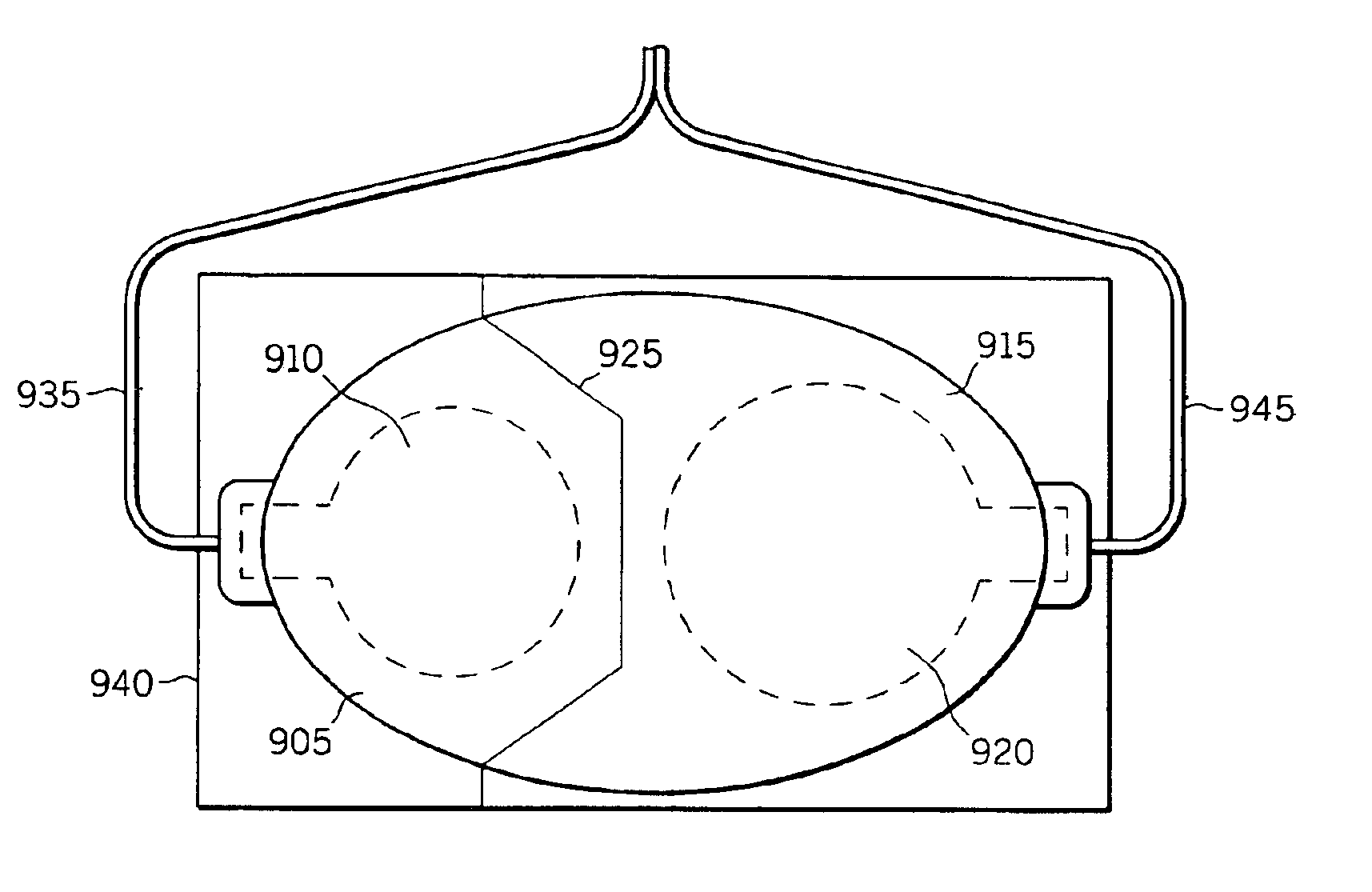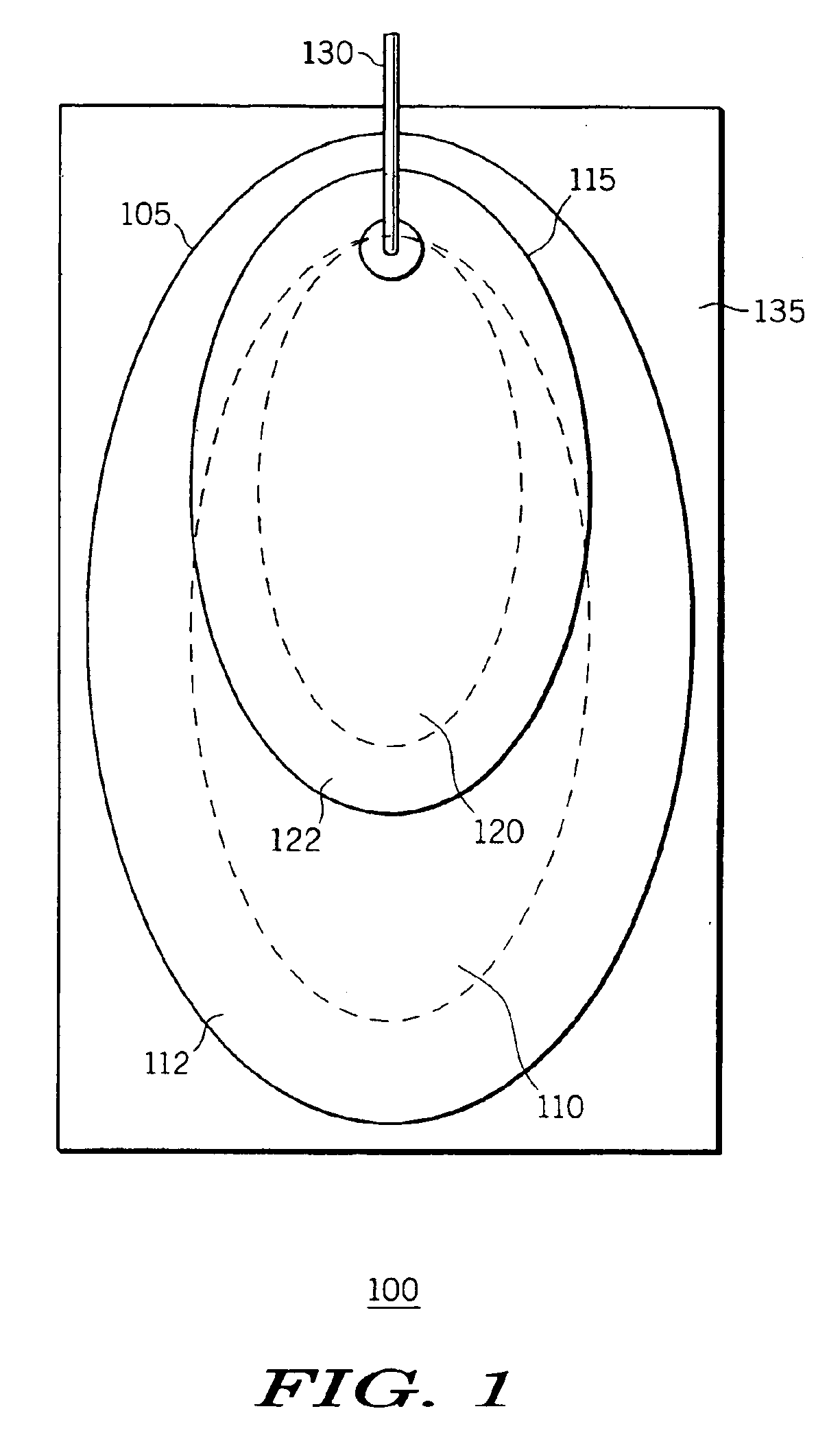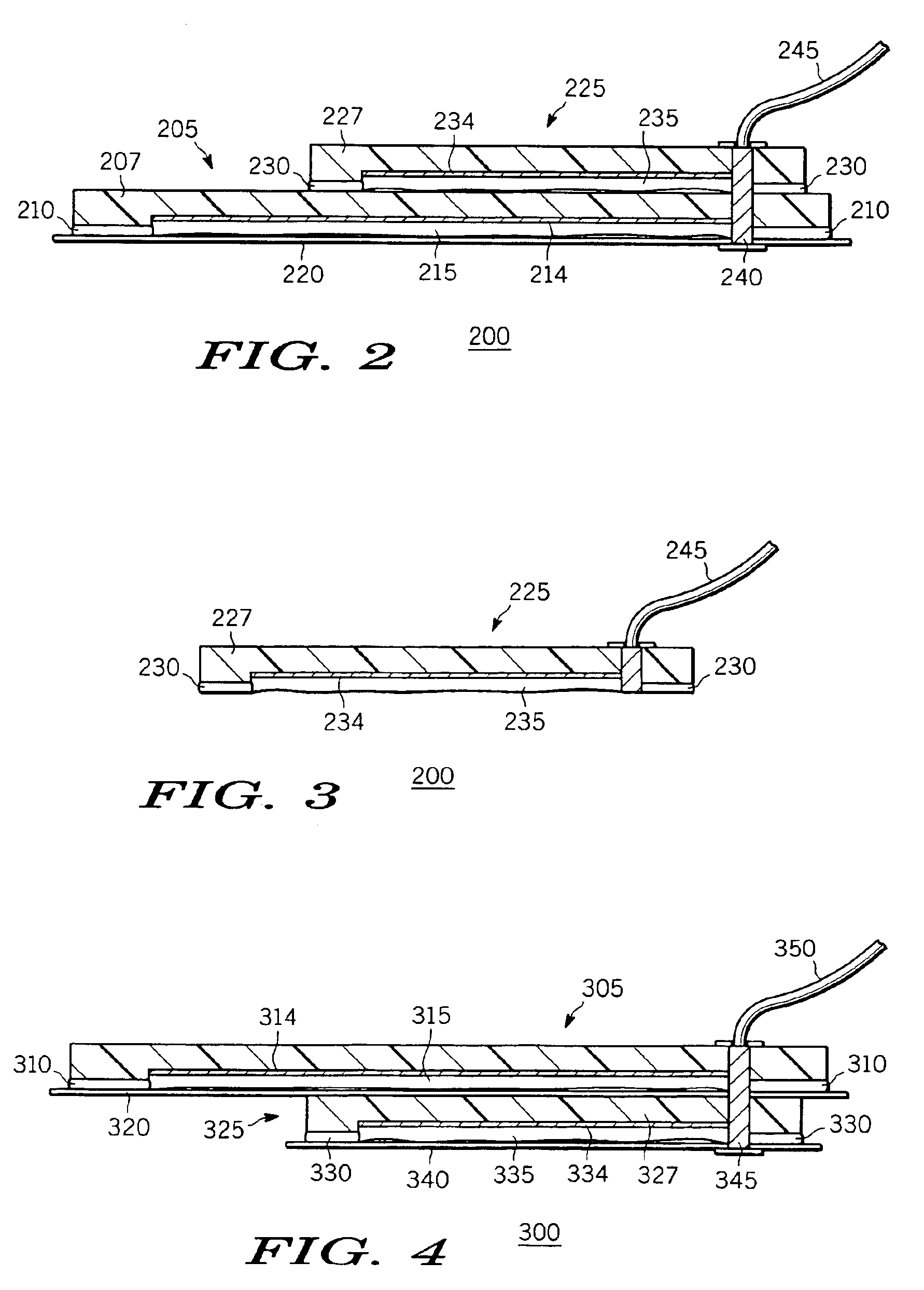Therapy and monitoring electrodes with patient accommodating features
a technology of monitoring electrodes and features, applied in the field of electrotherapy methods and apparatus, can solve the problems of limited shelf life of electrodes, small addition of electrodes, and disposable electrode pad sets
- Summary
- Abstract
- Description
- Claims
- Application Information
AI Technical Summary
Benefits of technology
Problems solved by technology
Method used
Image
Examples
Embodiment Construction
[0029]FIG. 1 depicts an electrode arrangement 100 constructed in accordance with one embodiment of the present invention. The electrode arrangement 100 includes a smaller electrode 115, suitable for pediatric use, releasably attached to a nonconductive backing substrate of a larger electrode 105, suitable for use on an adult. Each electrode 105 and 115 has a conductive surface area 110 and 120, respectively, preferably including a conductive gel, that is used to conduct electrical energy to a patient. In this embodiment of the invention, the conductive surface area 120 is smaller than the conductive surface area 110, though that is not required.
[0030]A region of adhesive 122 surrounds some or all of the conductive surface area 120 to adhere the smaller electrode 115 to a pediatric patient. Similarly, adhesive region 112 surrounds some or all of the conductive surface area 110 to adhere the larger electrode 105 to an adult patient. A nonconductive release liner 135 is releasably atta...
PUM
 Login to View More
Login to View More Abstract
Description
Claims
Application Information
 Login to View More
Login to View More - R&D
- Intellectual Property
- Life Sciences
- Materials
- Tech Scout
- Unparalleled Data Quality
- Higher Quality Content
- 60% Fewer Hallucinations
Browse by: Latest US Patents, China's latest patents, Technical Efficacy Thesaurus, Application Domain, Technology Topic, Popular Technical Reports.
© 2025 PatSnap. All rights reserved.Legal|Privacy policy|Modern Slavery Act Transparency Statement|Sitemap|About US| Contact US: help@patsnap.com



